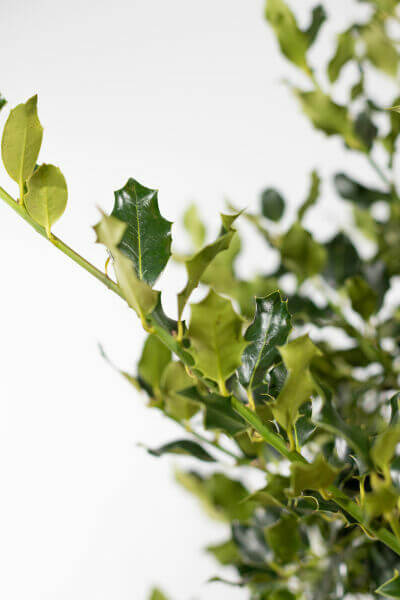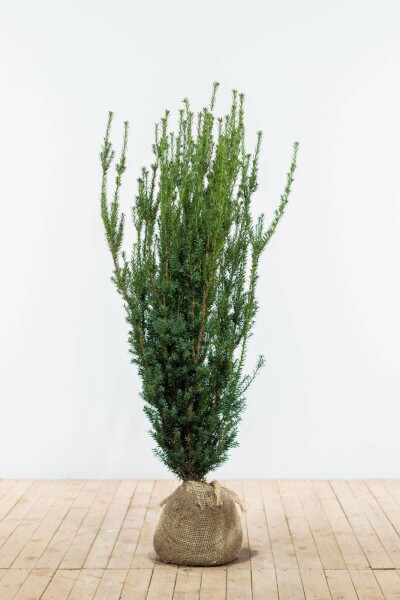Hedge Plants For All-round Interest
Enhance your garden's appeal with rich hedge ranges such as Yew (Taxus), Thuja, Laurel, Photinia, and Bamboo, commemorated for their structural integrity and ecological benefits.
Yew and Thuja supply evergreen coverage and winter season resilience, while Laurel offers quick growth and broad, fragrant leaves.
Photinia includes seasonal charm with its dynamic red foliage, and Bamboo lends a low-maintenance, serene ambiance.
These hedges enhance air quality, reduce sound, and develop tranquil, private areas.
Appropriate planting, spacing, and maintenance guarantee energetic development and environmental harmony.
Check out how these rich ranges can elevate your garden's beauty and wellness.
Key Takeaways
Transform Your Garden With Lush Hedge Ranges
- Select Yew for its thick, evergreen growth and unequaled durability.
- Opt for Laurel for its fast development and broad leaves, guaranteeing fast privacy.
- Pick Photinia for its vibrant seasonal foliage, which turns a striking dark red.
- Use Bamboo for a low-maintenance, winter-hardy hedge with visual appeal.
- Area plants 2-3 per meter and prune frequently for optimum development and health.
Popular Hedge Plants
When changing a garden with lavish hedge varieties, it's vital to consider popular hedge plants such as Yew, Thuja, Laurel, and Photinia due to their special attributes and advantages.
Yew (Taxus) is extremely respected for its durability and dense, green growth, making it a prime choice for withstanding landscapes.
Thuja is noted for its evergreen foliage and robust winter strength.
Photinia includes seasonal vibrancy with red leaves that darken with time, developing vibrant visual appeal.
Laurel uses fast development and fragrant, broad leaves, ideal for quick privacy.
Additionally, Bamboo is an outstanding choice for ambiance, using a low-maintenance, winter-hardy alternative that boosts the garden's visual with its stylish, swaying walking sticks.
These choices accommodate a variety of horticultural requirements and choices.
Benefits of Garden Hedges
Garden hedges offer a multitude of advantages, making them an important addition to any landscape. These natural barriers are affordable to implement and supply significant wind protection, boosting air blood circulation and contributing to noise decrease. The dense foliage of hedges like Thuja and Beech ensures personal privacy by obstructing visibility, developing a peaceful and remote environment.
Hedges likewise play a crucial function in microclimate regulation, supplying a stable environment that cultivates plant growth and minimizes temperature variations. Their elaborate leaf structures filter toxins, improving air quality and adding to a healthier garden environment.
Moreover, hedges master sound decrease, absorbing and deflecting sound waves to lower ambient sound levels. This double functionality of providing both acoustic and visual personal privacy boosts the overall serenity and visual appeal of any garden.
Planting and Upkeep Tips
For a successful hedge, precise preparation of the planting location is crucial. Ensure the soil has appropriate pH and drain to support strong root advancement.
Space the plants properly for the selected types. Water the hedge often throughout its preliminary development stage, changing as required with seasonal modifications.
Execute a organized pest control and disease avoidance technique, utilizing chemical or organic treatments when needed. Regularly examine for aphids, termites, and fungal infections.
Apply mulch to retain moisture and reduce weeds. Seasonal pruning promotes dense growth and air flow, necessary for plant health.
Following these guidelines will help you cultivate a dynamic, properly maintained hedge that boosts the beauty of your garden.
Spacing and Trimming Guidelines
Spacing and Trimming Guidelines
Proper spacing and trimming are essential for cultivating healthy, aesthetically appealing hedges. Sufficient spacing guarantees each plant gets adequate nutrients, light, and air flow.
Follow these guidelines for ideal hedge maintenance:
- Spacing: Position hedge plants 2-3 plants per meter to encourage robust growth.
- Pruning Techniques: Regular pruning is essential for maintaining desired hedge height and shape. Cut brand-new development in summertime and cut back older wood during winter.
- Seasonal Care: Change cutting schedules and approaches according to seasonal requirements to guarantee plant health.
- Hedge Height: Routinely display and cut to preserve the desired hedge height and achieve consistent aesthetics.
Sticking to these steps will guarantee your hedge grows, improving both the appeal and functionality of your garden.
Choosing the Right Hedge
Picking the Right Hedge
Choosing the appropriate hedge includes assessing elements such as fully grown height, foliage density, and ecological resilience. Effective hedge plant selection requires comprehending each species' development qualities and site-specific adaptability.
For instance, Yew (Taxus) provides exceptional longevity and thick growth, while Thuja is notable for its winter season resilience. Furthermore, considering upkeep requirements is crucial; fast-growing types like Laurel or Privet demand routine trimming, whereas low-maintenance choices like Bamboo or Ivy may be preferable for those seeking very little upkeep.
Ecological elements such as soil type, light schedule, and moisture conditions need to also assist the selection process. This mindful approach ensures the selected hedges will prosper, providing both functional and visual advantages to the garden landscape.
Delivery and Planting Guidance
To ensure your hedge plants prosper, they should be delivered by specialized carriers and planted promptly upon arrival.
Follow these vital actions for successful planting:
- Soil Preparation: Improve the soil with organic matter to enhance drain and nutrient material.
- Planting Depth: Create a trench twice the width and equivalent to the depth of the root ball.
- Watering Techniques: Water thoroughly after planting, keeping the soil regularly wet however not saturated.
- Mulching: Apply a layer of mulch to keep moisture and reduce weeds.
Consumer Assistance and Service
Given the vital function of timely assistance in horticultural pursuits, our client assistance group is available six days a week through telephone, email, and social media to provide expert guidance and quickly attend to any issues. Their devotion to fast response times ensures client satisfaction by fixing inquiries associated with plant health, optimum planting techniques, and upkeep schedules.

This extensive support group, strengthened by an outstanding 9.3/ 10 client rating, highlights our commitment to boosting the gardening experience for every single client.
Often Asked Concerns
For How Long Does It Consider Hedge Plants to Develop?
Hedge plants generally require one to three years to end up being completely developed, with the specific period differing by types and growing conditions.
Reliable care during this critical period is important for robust growth. Consistent watering, alert weed control, and proper fertilizer application are essential in promoting strong root advancement.
For instance, fast-growing types like Laurel may establish quicker, while slower-growing varieties such as Yew may take longer. Thorough upkeep accelerates the establishment procedure, leading to healthy and thick hedges.
What Are the very best Hedge Plants for Privacy?
The question of the finest hedge plants for personal privacy involves examining evergreen and deciduous alternatives.
Evergreen hedges like Thuja, Laurel, and Cypress offer year-round coverage, making sure constant privacy.
In contrast, deciduous hedges such as Beech use seasonal personal privacy, shedding leaves in colder months.
Secret maintenance suggestions for personal privacy hedges consist of regular cutting, fertilizing in spring, and appropriate spacing-- typically 2 to 3 plants per meter.
In addition, consistent watering and thorough weed elimination are essential for promoting healthy, thick growth.
Can Hedge Plants Attract Wildlife to My Garden?
Yes, hedge plants can bring in wildlife to click here your garden by providing vital benefits like shelter, food, and nesting websites, thus boosting local biodiversity. For circumstances, yew, holly, and laurel are outstanding for attracting birds, while ivy supports a range of pests.
However, it's crucial to note that there are some downsides, such as increased maintenance to manage bugs and regular maintenance. Thoroughly selecting and preserving hedge ranges can help stabilize these downsides and advantages, eventually promoting a sustainable and dynamic environment in your garden.
Are There Any Blooming Hedge Plants Available?
Yes, there are flowering hedge plants available that can enhance the charm of your garden.
For instance, Elaeagnus, also referred to as Olive Willow, produces aromatic white flowers in the fall, adding a touch of elegance.
Photinia, another popular choice, showcases vibrant red leaves that develop into a rich green, developing a dynamic visual result throughout the seasons.
To ensure these plants flourish, it's necessary to practice correct pruning techniques and seasonal maintenance, such as trimming new growth in the summertime and cutting down in the winter season.
These procedures will assist maintain the health and aesthetic appeal of your flowering hedges.
How Do I Prevent Pests in My Hedge Plants?
To prevent pests in hedge plants, employ natural insect control approaches and keep correct hedge care. Present helpful pests like ladybugs, which victimize damaging bugs, to develop a well balanced environment.
Frequently check your hedges for indications of problem and without delay get rid of any afflicted parts to prevent the spread. Guarantee the health of your hedges by applying balanced fertilizers and supplying appropriate water.
Use mulching to keep soil moisture and proper spacing to lower plant tension and promote robust development. These practices collectively help in decreasing bug problems and preserving a healthy hedge.
Conclusion
In essence, choosing the ideal hedge varieties such as Yew, Thuja, and Laurel can transform any garden into a serene sanctuary. These plants provide year-round greenery, boost visual appeal, and offer useful advantages like noise reduction and wind defense.
Appropriate planting techniques, precise spacing, constant watering, and seasonal trimming are essential for ideal growth.
Reliable shipment services and professional consumer assistance ensure a smooth experience from purchase to planting, making it simpler than ever to raise your outdoor area.
Garden hedges offer a plethora of benefits, making them an important addition to any landscape. These natural barriers are economical to implement and offer significant wind security, enhancing air flow and contributing to noise reduction. The thick foliage of hedges like Thuja and Beech ensures personal privacy by obstructing exposure, developing a secluded and peaceful environment.

Pruning Strategies: Routine pruning is essential for keeping preferred hedge height and shape. Trim brand-new development in summer and cut back older wood throughout winter season.